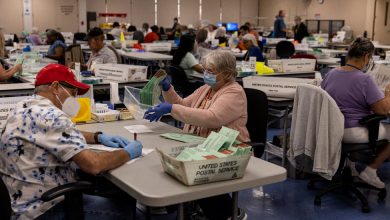A Supreme Court in Disarray After an Extraordinary Breach

WASHINGTON — Sources have motives, and the leaked draft opinion overturning Roe v. Wade raises a question as old as the Roman Empire. Cui bono? Who benefits?
Not the Supreme Court as an institution. Its reputation was in decline even before the extraordinary breach of its norms of confidentiality, with much of the nation persuaded that it is little different from the political branches of the government. The internal disarray the leak suggests, wholly at odds with the decorum prized by Chief Justice John G. Roberts Jr., was a blow to the legitimacy of the court.
Relations among the justices, too, on the evidence of questioning at arguments and statements in opinions, have turned fraught and frosty. “Will this institution survive the stench that this creates in the public perception that the Constitution and its reading are just political acts?” Justice Sonia Sotomayor asked when the challenge to Roe was argued in December, as it became clear that five justices were ready to overrule the decision.
The fact of the leak cannot be separated from its substance. Only a move as extraordinary as eliminating a constitutional right in place for half a century could transform the court into an institution like any other in Washington, where rival factions disclose secrets in the hope of obtaining advantage.
“Until now, a leak of this kind would have been unthinkable,” said Peter G. Verniero, a former justice of the New Jersey Supreme Court. “The protocol of our highest court has been seriously ruptured. The leaking itself reflects another sad step toward casting the court as a political body, which, whatever your preferred jurisprudence, is most unhealthy for the rule of law.”
The court sustained collateral damage in March, when it emerged that Virginia Thomas, the wife of Justice Clarence Thomas, had sent incendiary text messages to the Trump White House in the weeks leading up to the Jan. 6 attack and that Justice Thomas not only had failed to disqualify himself from a related case but also had cast the sole noted dissent.
The harm from the leak was more direct, raising questions about whether the court is capable of functioning in an orderly way.
Understand the Challenge to Roe v. Wade
The Supreme Court’s upcoming decision in Dobbs v. Jackson Women’s Health Organization could be the most consequential to women’s access to abortion since 1973.
- The Arguments: After hearing arguments in December, the court appeared poised to uphold the Mississippi law at the center of the case that could overturn Roe v. Wade.
- Under Scrutiny: In overturning Roe v. Wade, would the justices be following their oath to uphold the Constitution or engage in political activism? Here is what legal scholars think.
- An America Without Roe: The removal of abortion rights at the federal level would cause changes that would mostly be felt by poor women in Republican states.
- Legislative Activity: Some Republican-led state legislatures have already moved to advance abortion restrictions ahead of the court’s decision. Here is a look at those efforts.
Justice Samuel A. Alito Jr.’s draft opinion is dated Feb. 10, or almost three months ago. Under the court’s ordinary practices, additional drafts have circulated since then, as Justice Alito refined his arguments, made changes to accommodate his allies, responded to criticisms in one or more draft concurrences or dissents — and, crucially, worked to make sure he did not lose his majority.
The draft was marked “opinion of the court,” meaning it was intended to reflect the views of at least five justices. Politico, which obtained the document, reported that five members of the court had voted to overrule Roe soon after the argument in December: Justices Alito and Thomas and the three members of the court appointed by President Donald J. Trump — Justices Neil M. Gorsuch, Brett M. Kavanaugh and Amy Coney Barrett.
Those five votes were in keeping with the questions those justices asked at the argument. They were also consistent with Mr. Trump’s vow to appoint justices who would overrule Roe, which established a constitutional right to abortion in 1973.
“That lineup remains unchanged as of this week,” Politico reported.
Still, Justice Alito was no doubt worried that Chief Justice Roberts, who sketched out a middle-ground position at the argument, might threaten his majority. The chief justice suggested that the court could uphold the Mississippi law at issue in the case, which bans abortions after 15 weeks, but stop short of overruling Roe outright.
That position would have been viewed as extreme just a few years ago, as it would eliminate the key element of Roe and of Planned Parenthood v. Casey, the 1992 decision that reaffirmed what it called Roe’s “central holding” — that “a state may not prohibit any woman from making the ultimate decision to terminate her pregnancy before viability.”
Viability, the ability of the fetus to survive outside the womb, is these days around 23 weeks, meaning that Mississippi’s 15-week law is flatly at odds with Roe and Casey. But the chief justice’s approach, whether considered incremental or unprincipled, would have left abortion available, for now, to many people.
In an editorial last week, The Wall Street Journal expressed concern that Chief Justice Roberts was trying to persuade Justices Kavanaugh and Barrett to take his narrower approach.
The point of the leak, then, may have been to lock in the five-justice conservative majority.
“I would be wary of jumping to a conclusion that the leaker is necessarily someone who opposes overturning Roe v. Wade,” said Richard L. Hasen, a law professor at the University of California, Irvine.
Kermit Roosevelt, a law professor at the University of Pennsylvania, said the source was probably trying to increase the price of switching positions.
“In terms of who leaked it and why, it seems much more likely to me that it comes from the right in response to an actual or threatened defection by one of the five who voted to overturn Roe,” he said. “Leaking this early draft makes that more costly for a defector because now people will think that they changed their vote after the leak in response to public outrage.”
Professor Hasen said there was another benefit to the right from the disclosure of the draft opinion.
“This kind of leak could in fact help the likely future majority overturning Roe if it deflects the conversation to the question of Supreme Court secrecy and the danger of leaks to the legitimacy of the process,” he said. “That’s better than a conversation about the potential illegitimacy of overturning longstanding precedent allowing reproductive choice. It also could be intended to soften the blow by signaling to everyone the earthquake to come.”
Even as Chief Justice Roberts said on Tuesday that he had ordered an investigation into what he described as an “egregious breach of trust,” it was not clear that the leak violated any law. As Chief Justice Warren E. Burger wrote in a footnote in his dissent in the Pentagon Papers case, which refused to block publication of a secret history of the Vietnam War, “No statute gives this court express power to establish and enforce the utmost security measures for the secrecy of our deliberations and records.”
Nonetheless, he noted, the court is not powerless to root out and punish the source: “I have little doubt as to the inherent power of the court to protect the confidentiality of its internal operations by whatever judicial measures may be required.”
The reasoning in the draft opinion is what one would expect from Justice Alito, a fierce critic of Roe and Casey, said Richard W. Garnett, a law professor at Notre Dame.
“It is unlikely that any observers or commentators familiar with the case are actually surprised by the possibility that Justice Alito has drafted a majority opinion stating that those decisions were ‘egregiously wrong,’” Professor Garnett said.
“In any event, however, for an employee or member of the court to intentionally leak a draft opinion would be a gross betrayal of trust, particularly if the leak were an effort to advance partisan aims or to undermine the court’s work and legitimacy,” Professor Garnett added. “Whatever our views on particular legal questions, we should all hope that the justices will not be swayed or influenced by such efforts.”
The Supreme Court confirmed on Tuesday that the draft opinion was authentic but cautioned that it did not “represent a final decision by the court or the final position of any member on the issues in the case.” Lynn Fitch, Mississippi’s attorney general, said in a statement, “We will let the Supreme Court speak for itself and wait for the court’s official opinion.”



